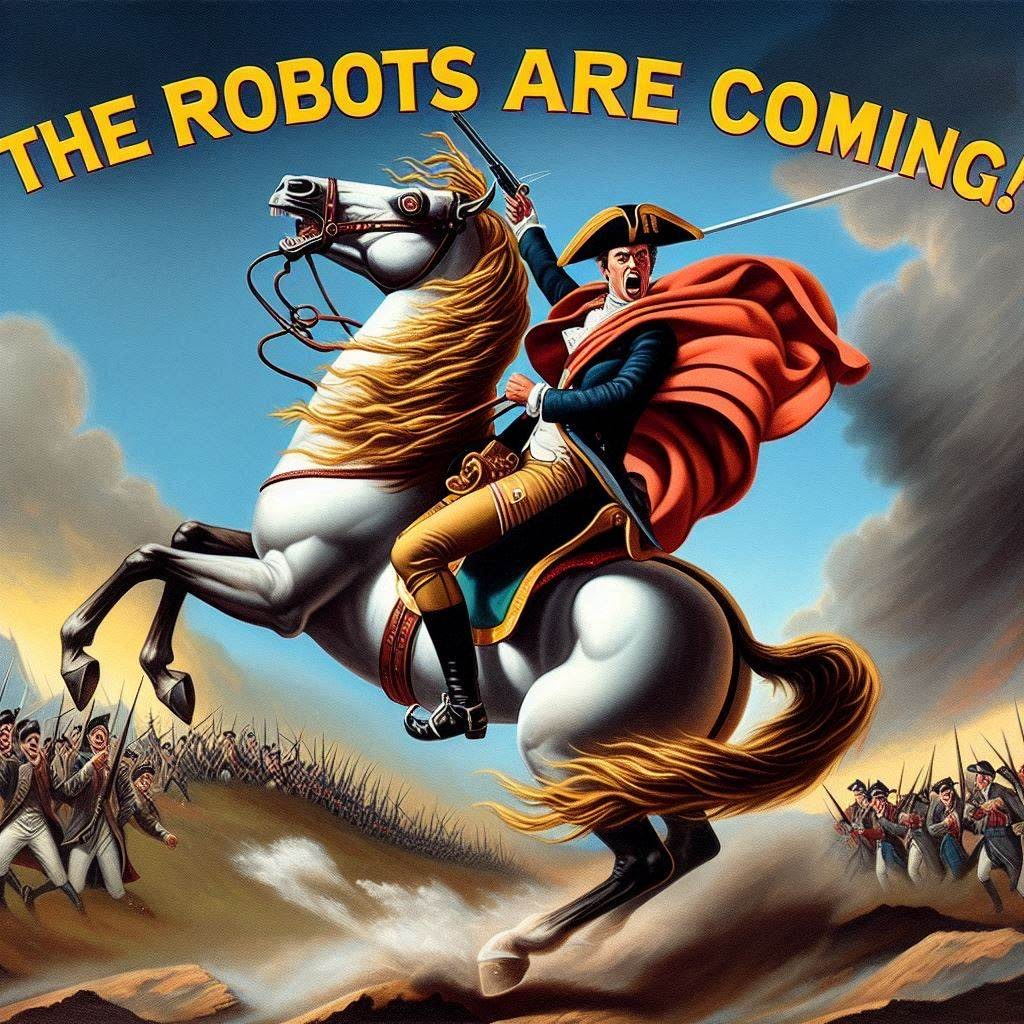MARKET PERSPECTIVE
By J Mulraj
Sep 21-27, 2024
Provided the myopic global polity lets us get there
In the 1966 movie “The Russians are Coming, The Russians are Coming”, actor Ben Blue rides through town yelling the warning, that the Russians were coming.
A 2024 movie would have Adam Dorr announcing, not warning, “The Robots Are Coming”. He is the Director of Research at RethinkX, an independent think tank founded by Tony Seba, an acknowledge expert on technology disruptions. This video is worth listening to, painting, as it does, a picture of optimism which can be ushered in via the technological disruption of humanoid robots. Or, read this article by Adam Dorr .
Humanoid robots resemble humans and are being designed to assist them, initially doing work considered too dangerous or distasteful for humans to perform. For example, a disaster response at a nuclear power plant.
Some of the large companies making humanoid robots are Tesla, Toyota, Figure.ai (in partnership with Open AI and Microsoft), Boston Dynamics, Hyundai, and others. Chinese companies like Ubtech Robotics, Cognex Corporation, etc are also demonstrating prowess in the field.
Dorr animatedly explains how, using robots, the per capita productivity can increase 2X, 5X or even 10X in a decade, bringing in huge prosperity. He reasons thus:
- a humanoid robot costs under $20,000, and can be built in a few hours. A human child takes 18 years to become productive, and raising him/her costs $300,000 in a developed country.
- robot can work 24 hours, 3X a human work day. It works 7 days a week.
- it doesn’t need support in workplace (toilets, canteens, AC, training, insurance, child care, pensions, stock options, no sick leave or maternity leave). It can be re-assigned jobs instantly and retrained through a software change.
- The lifespan of a robot is 5 years, so annually the cost is $4000. Based on varying assumptions of number of robots used and its productivity, the increase in a country’s GDP that would ensue, using them, would be phenomenal.
- The initial cost of $20000 will come down sharply, as robots could be trained to produce themselves. So return on investment in terms of productivity gains would be unimaginable.
This means there would be competition amongst countries to go in for humanoid robots. The gains in productivity and resultant leaps in GDP of countries adopting them, would compel others to follow suit.
That would put Governments under severe strain on how to tackle the resultant unemployment. It is hoped that the increased prosperity arising from the leaps in GDP and distributed to citizens through a UBI (universal basic income) program, would act, like a lottery winner, to make citizens retire in contentment. But people need work, and challenges; an idle mind is the devil’s workshop. So the societal angle needs to be tackled.
The other problem which would need to be tackled is the environmental impact. Increases in GDP means higher consumption of stuff, hence the use of more resources to produce the stuff. Technologies like 3D printing would help greatly reduce waste, as it is an additive process of manufacture (it adds layer upon layer), not a subtractive process (think of a block of wood used to make a chair, and the wastage of wood in chopping off that which is not required, as opposed to adding strips of wood cut into shape, layer upon layer).
Maybe other technologies can be used to free up land and water resources. Such as cellular agriculture using which beef can be produced in a Petri dish in order to provide protein, obviating the need for animal husbandry. Animal husbandry uses a lot of water. Just the growing of crops to feed the cattle uses 41% of total water used in agriculture.
Similarly, land. Animal husbandry uses 2.5 b hectares of land, 50% of all agricultural land.
Besides humanoid robots, powered by AI, with the potential of multiplying productivity, technology is promising unimaginable benefits in healthcare.
Watch this video of an interview of Mark Benioff, founder CEO of Sales Force, a software company at the All In Summit. The All In summit is organized by the besties of the popular All In Podcast, and invites thought leaders at its summit. Benioff mentions the amazing technological breakthroughs of Shinya Yamanaka, a Japanese researcher who won the 2012 Nobel Prize for Physiology or Medicine for the discovery that mature cells can be converted to stem cells.
Such discoveries are what lead to a successful corneal implant, done by Israeli firm CorNeat Vision, that enabled a 78 year old man to see! It must be applauded for its vision, which enables a restoration of vision in blind people. Kudos to the founder and doctors of CorNeat!
A Japanese company, Helical Fusion, has launched a steady state nuclear fusion reactor, which will be commercialized within a decade, to provide limitless and virtually free
This is becoming crucial now, as AI and data storage are huge guzzlers of electric power. Which is why Microsoft has agreed to buy the nuclear facilities of Three Mile Island, infamous because of an accident in 1979, subject to regulatory clearances.
But all the promise for human betterment emanating from visionary technologists will come to naught because of myopic politicians with glaucoma. A prime candidate would be US Secretary of State Antony Blinken. Two years ago, shortly after Russia’s invasion, Blinken told CBS that the US would give NATO member Poland the green light to send Mig 29 aircraft to ‘enforce’ a no-fly zone for Russian aircraft over Ukraine! Fortunately Biden didn’t accept. It would be interpreted as NATO involvement and could have led to WW3.
Blinken was at it again, as per this article https://consortiumnews.com/2024/09/20/the-madness-of-antony-blinken/. He apparently leaked to the Guardian that the US would green light a proposal by British PM Kier Starmer, to allow Ukraine to fire British Storm Shadow missiles into Russia. British troops, and American guidance systems would be needed, thus involving both countries directly, and posing the risk of a nuclear war. It was averted at 1 second to midnight.
Last week the BSE Sensex rose 1027 points to end at 85571 .
An important event investors should watch out for is the threat, by the union, of a strike at ports on the US East Coast. A decision must be taken on their demands before October 1. Should it occur, it would cripple trade, especially imports for the festive season in November and December.
That’s another advantage of humanoid robots. At least they wouldn’t make asinine geostrategic decisions that can lead to annihilation.
(Hopefully).
Image created by Bing
Comments may be sent to jmulraj@asiaconverge.com










































COMMENTS